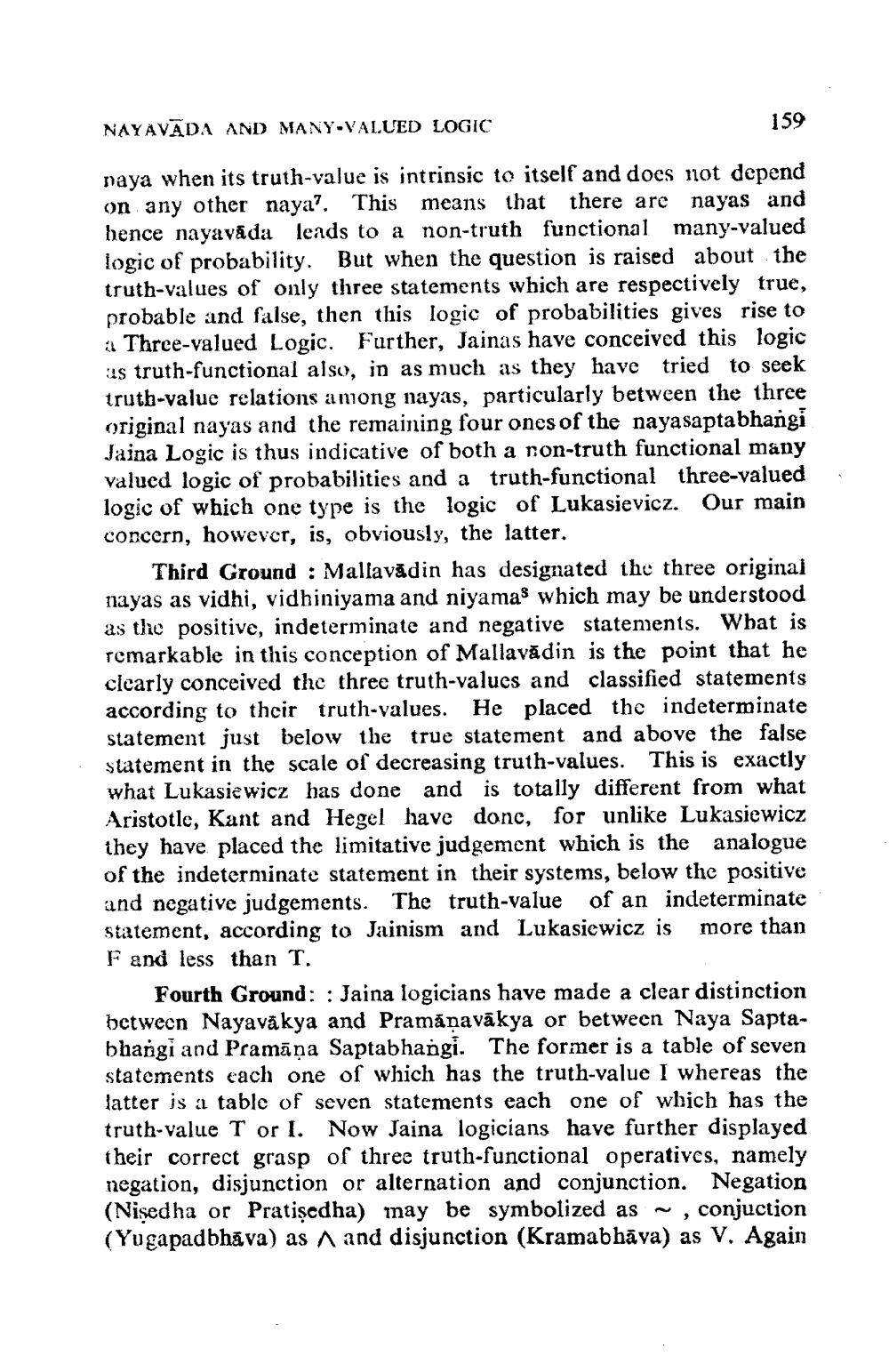________________
NAYAVADA AND MANY-VALUED LOGIC
159
naya when its truth-value is intrinsic to itself and does not depend on any other naya?. This means that there are nayas and hence nayavāda leads to a non-truth functional many-valued logic of probability. But when the question is raised about the truth-values of only three statements which are respectively true, probable and false, then this logic of probabilities gives rise to · Three-valued Logic. Further, Jainas have conceived this logic is truth-functional also, in as much as they have tried to seek truth-value relations among nayas, particularly between the three original nayas and the remaining four ones of the nayasaptabhangi Jaina Logic is thus indicative of both a non-truth functional many valued logic of probabilities and a truth-functional three-valued logic of which one type is the logic of Lukasievicz. Our main concern, however, is, obviously, the latter.
Third Ground : Mallavădin has designated the three original nayas as vidhi, vidhiniyama and niyamas which may be understood as the positive, indeterminate and negative statements. What is remarkable in this conception of Mallavă din is the point that he clearly conceived the three truth-values and classified statements according to their truth-values. He placed the indeterminate statement just below the true statement and above the false statement in the scale of decreasing truth-values. This is exactly what Lukasiewicz has done and is totally different from what Aristotle, Kant and Hegel have donc, for unlike Lukasiewicz they have placed the limitative judgement which is the analogue of the indeterminate statement in their systems, below the positive and negative judgements. The truth-value of an indeterminate statement, according to Jainism and Lukasiewicz is more than F and less than T.
Fourth Ground: : Jaina logicians have made a clear distinction between Nayavā kya and Pramănavākya or between Naya Saptabhangi and Pramāņa Saptabhangi. The former is a table of seven statements each one of which has the truth-value I whereas the latter is a table of seven statements each one of wbich has the truth-value T or I. Now Jaina logicians have further displayed their correct grasp of three truth-functional operatives, namely negation, disjunction or alternation and conjunction. Negation (Nişedha or Pratișcdha) may be symbolized as ~ , conjuction (Yugapadbhāva) as A and disjunction (Kramabhāva) as V. Again




